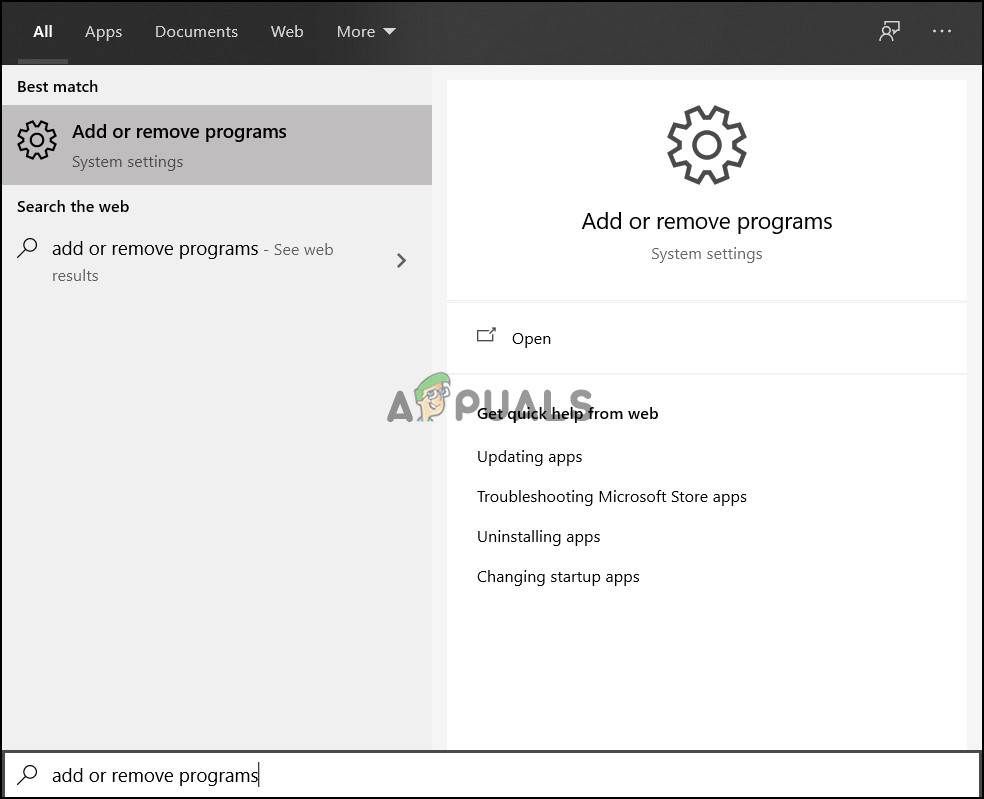How to Fix CLR Error 80004005 ‘the program will now terminate’
The Docker CLR error 80004005 occurs due to multiple instances of .NET framework trying to run the application. Moreover, the CLR error is quite common with third-party applications when they do not have sufficient permissions when launching.

It may also occur if the program is not compatible with the Windows OS or your Windows is outdated and isn’t updated to the latest build available. A corrupt .NET installation was also known to cause the CLR error.
Remove Multiple Instances and Reinstall .NET Framework
The CLR error is most commonly caused by multiple instances of .NET framework, as explained above. Although, the error can be normally resolved by running the application with administrator rights, sometimes this does not work. In this case, it can then be resolved by removing and reinstalling the .NET frameworks.
- Press Windows key and search Add or remove programs press Enter.

Add or Remove Programs - Search .NET in the search text box.
- Remove all the apps that are returned in the search. You can also navigate to the Application Manager (Windows key + R and appwiz.cpl) to uninstall the applications directly.
- Then, download and install the latest .NET framework from here.
- However, keep in mind this does not work for later versions of Windows.
Remove .NET Framework Applications and Install using Windows Update
The above-mentioned method will not work for everybody, as the latest .NET framework was installed as a part of the OS and cannot be removed via traditional ways. The solution provided by Microsoft technical experts is a cleanup tool that removes the appropriate .NET framework installation. Furthermore, the method proceeds to repair the Windows Update feature and install the .NET framework using Windows Update.
To Remove the .NET Framework:
- Download the .NET Framework update cleaning tool.
- Run the Installation Cleanup Utility.
- When opening the tool, choose in the Product to cleanup field, the option: .NET Framework – All Versions.
- This option will not be available for all computers. In that case, choose the latest version of .NET framework installed.

.NET Framework Cleanup Utility - Then click on the Cleanup Now button to delete all versions of the .NET Framework.
- The process will take some time to finish.
- Press the Exit button when available and restart the computer.
To Repair Windows Update:
- Access the link and download the Easy fix application.
- Then, run the application and check the option Run Aggressive Options (not recommended).

Easy Fix - Click on Next.
- Run the fix following the information on the screen.
- Restart the computer.
The next step is to update using Windows Update. Open Windows Update and check again for updates. Install the .NET framework via the Windows Update. Run the application to check if the issue has been resolved. Furthermore, if the issue is not resolved a visit to a technical expert is advised.




